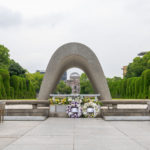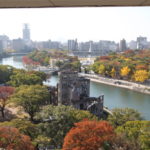HIROSHIMA CITY PEACE MEMORIAL PARK REST HOUSE
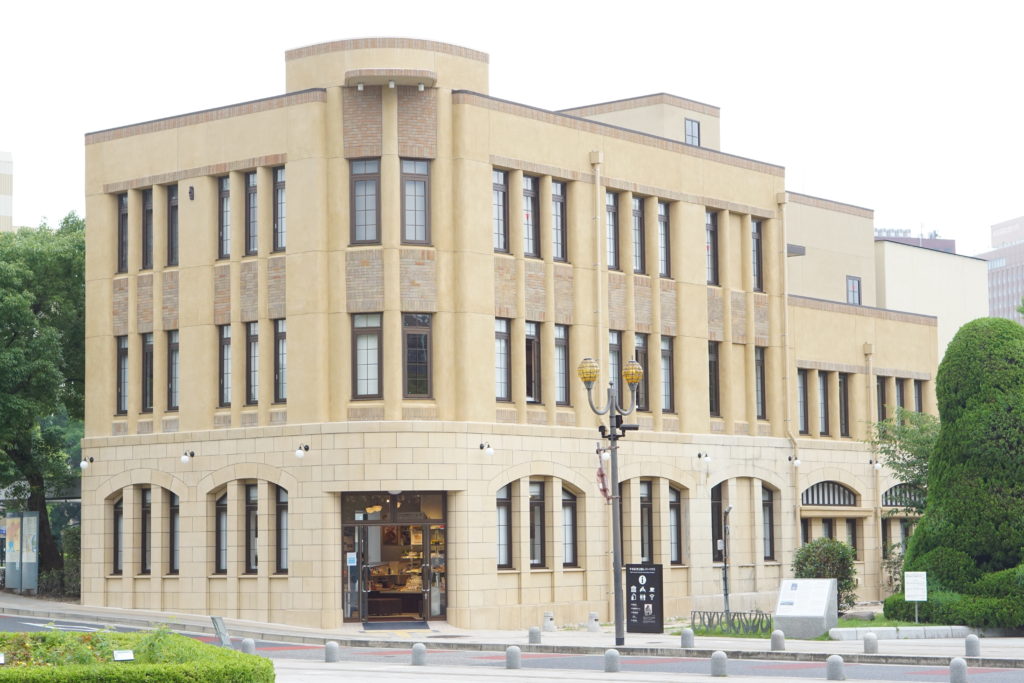
As an International City of Peace and Culture, Hiroshima is gaining recognition and interest around the world. After a renovation, HIROSHIMA CITY PEACE MEMORIAL PARK REST HOUSE reopened in July 2020. In this article, we trace the history of the rest house that has changed over time, and introduce its new role and facilities.
The only Atomic bombed building in Peace Memorial Park that is still in use today
The building of the Rest House was built in 1929 as the Taisho-ya Kimono Shop. The Nakajima district, where the building is located, was originally the largest downtown area in Hiroshima, located in the Ota River Delta. Merchants came and went, and the district was said to be a center of culture and activity. While tile-roofed merchant houses and private homes were all traditional Japanese styled buildings, the concrete Taisho-ya Kimono Shop with its show windows is said to have been a novelty at the time. However, in December 1943, during the wartime regime, the Textile Control Ordinance was issued and Taisho-ya Kimono Shop closed. In June 1944, the building was acquired by the Hiroshima Prefecture Fuel Rationing Union and was renamed “Fuel Hall.”
-787x1024.jpg)
On August 6, 1945, when the atomic bomb was dropped, 37 people were working in the building. All of them died except for Mr. NOMURA Eizo, who happened to go down to the basement to get some documents. The inside of the building was severely damaged, but the basic shape of the building was preserved and it was used as the Hiroshima East Reconstruction Office . Since 1982, it has been maintained as PEACE MEMORIAL PARK REST HOUSE and has become a place of relaxation.
Renovation to attract more visitors
Before the renewal, the first floor of the rest house was used as a shop and tourist information center, the second and third floors as offices of the Hiroshima Convention and Visitors Bureau, and the basement was open to visitors on request. As part of a project to commemorate the 70th year of the atomic bombing, renovation of the Rest House was decided. The renovation plan that was drawn up includes remodeling the ground portion of the building to make it look like the former Taisho-ya Kimono Shop. Space inside the building was designed to display materials related to the Nakajima district before the atomic bombing, preserving and utilizing the building to convey the reality of the atomic bombing. The reconstruction started in 2018.
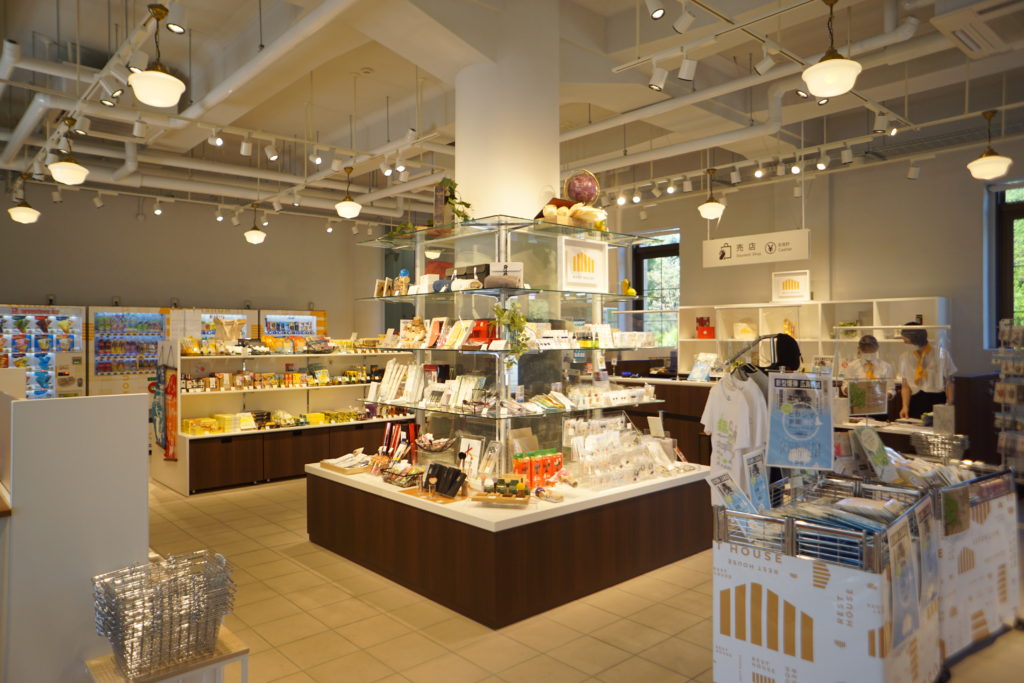
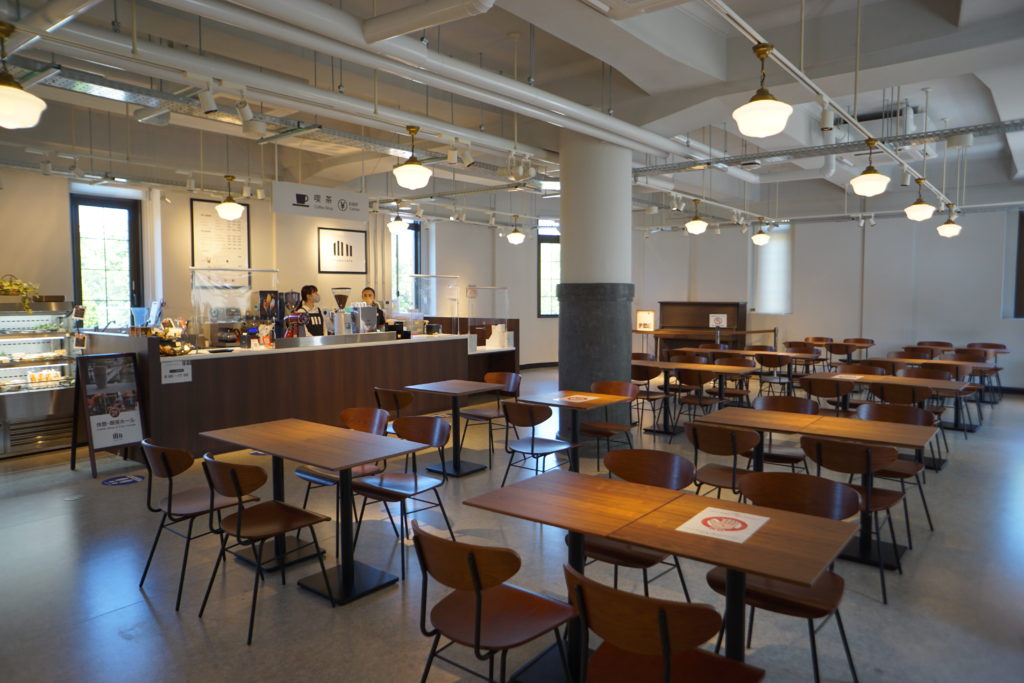
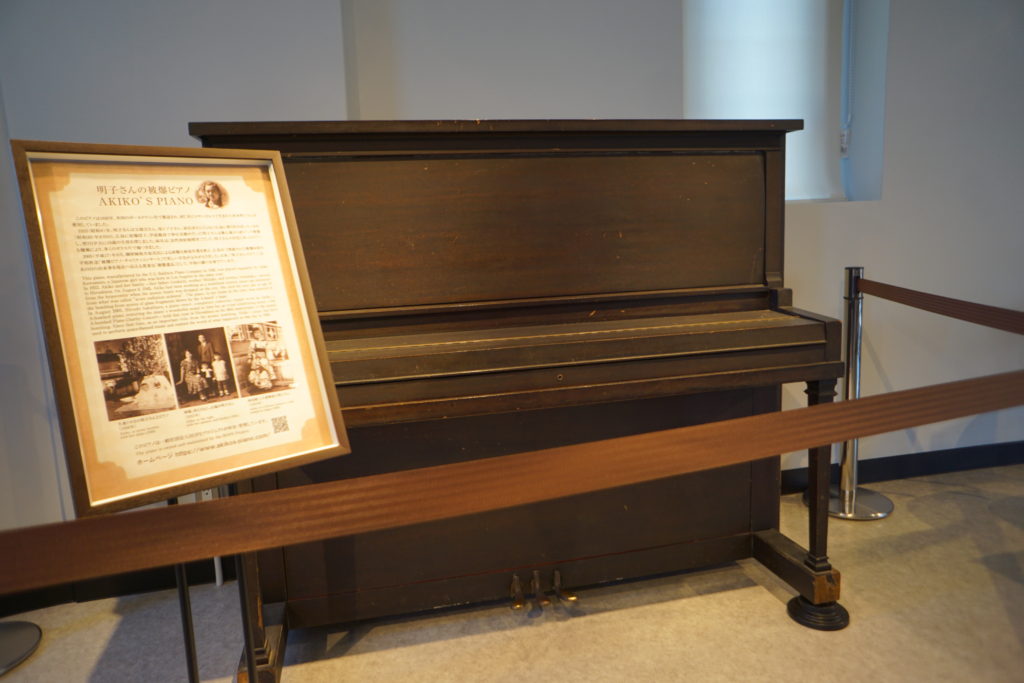
The renewal, finally completed in 2020. The shop and tourist information center on the first floor was enlarged. On the second floor, there is a coffee shop with an Atomic bombed piano, and on the third floor, there are exhibits on the history of this building and Nakajima district with documents and photos.
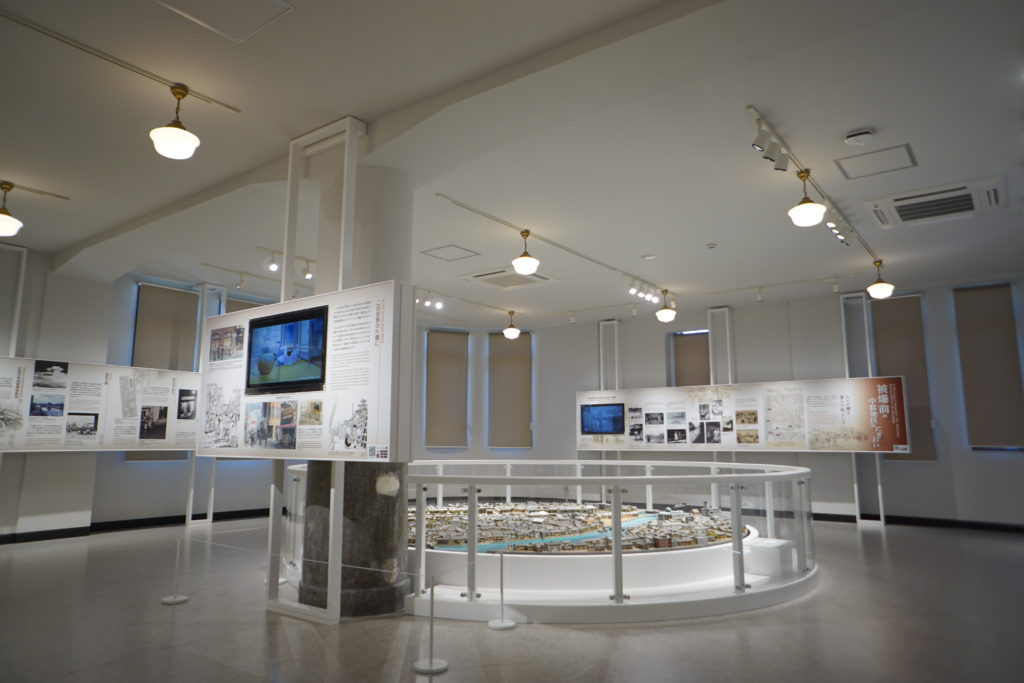
A clear actylic plate is installed on a part of the ceiling for the exhibition and visitors can see the remains of the atomic bombing found during the renovation from below.
Also, the basement has been preserved in its pre-renewal state, while providing a site that allows visitors to visit at all times. The display includes the diary of Mr. NOMURA Eizo, the building’s only survivor, and the paintings and other items depicting scenes from the time of the bombing.
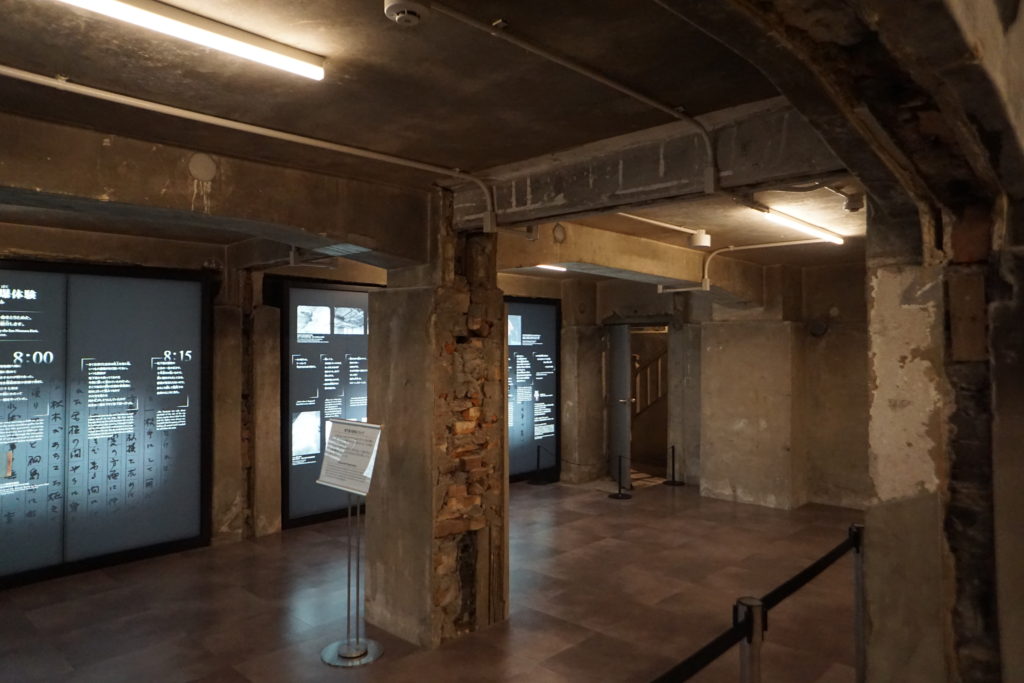
As a person responsible for the future of Hiroshima
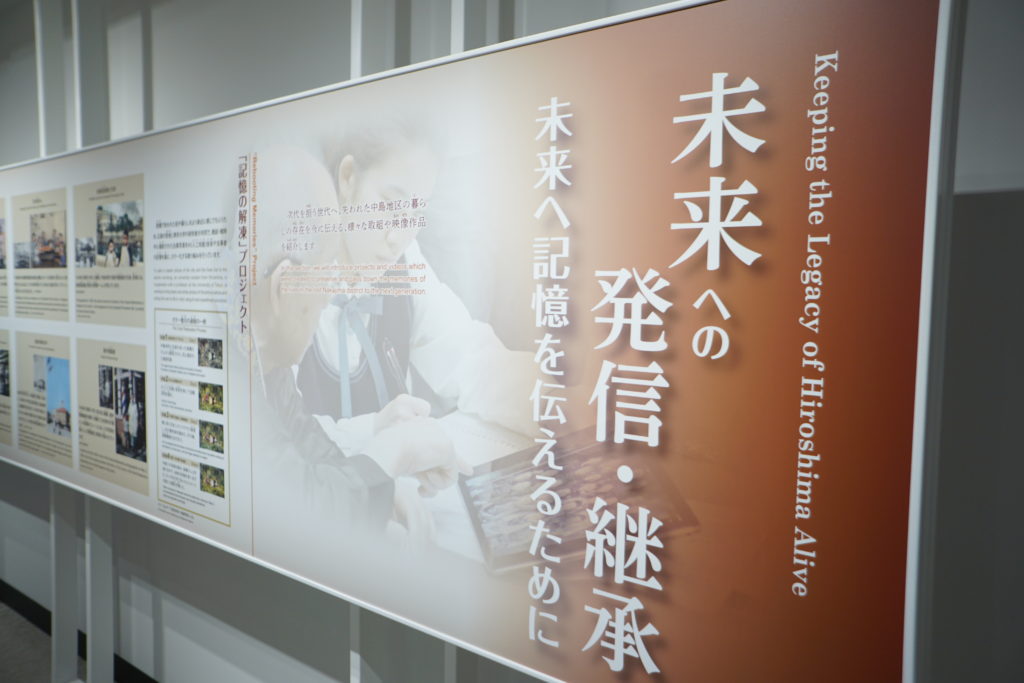
Explanation in the third floor exhibition room
In addition to being a place for relaxation, the Rest House also plays a role in conveying the reality of the atomic bombing and sharing thoughts of peace. For example, in the exhibition room on the third floor, the museum takes us back in time to the past and tells us what should be passed on to the future. The museum introduces AI technology and black-and-white photos taken before and during the war, and artificially colored basing on the memories of those who survived the bombing (called the Rebooting Memories Project). There is also a VR video of the hypocenter created by the Computational Technology Research Club of Hiroshima Prefectural Fukuyama Technical High School. The VR images were created using materials and stories told by people who were familiar with the immediate aftermath of the Atomic bombing. Now that the number of Atomic bomb survivors are decreasing, it yet gives us a virtually realistic picture of what had happened then.
In addition, at the tourist information center on the first floor, visitors are offered a Peace Park tour, and a bicycle tour around the nearby Atomic bombed remains. The rest house provides an opportunity for visitors to think of Hiroshima’s past not as mere “history” but as “our own issues.”
Basic Information
HIROSHIMA CITY PEACE MEMORIAL PARK REST HOUSE
Address: 1-1 Nakajima-cho, Naka Ward, Hiroshima City
Phone: +81(0)82-546-9133 (Staff Office)
Business hours:
March to November: 8:30 a.m. to 6:00 p.m.
December to the end of February of the following year: 8:30 a.m. to 5:00 p.m.
August (except for the 5th and 6th): 8:30 am to 7:00 pm
August 5th: 8:30 to 20:00; August 6th: 7:30 to 20:00
Open all year round
Peace Park Tour
Runned by a young bilingual team and people who have been involved in peace activities in Hiroshima. The tour starts from the Rest House and takes about 80 minutes to visit the Motoyasu River, the Atomic bomb Dome and Aioi Bridge, the Atomic bombed memorial Mound, Korean Victims and Survivors Memorial Monument, the gravestone at Jisenji Temple, the Cenotaph for the Victims of the Atomib Bomb, and the Children’s Peace Monument.
One person is the minimum number of participants.
3,000 yen for adults (12 years and older), 500 yen for children (6-11 years old), and free for children under 6 years old.
https://hiroshima-resthouse.jp/tour/peacetour
Peace Cycling Tour
A bicycle tour of Hiroshima’s atomic bombed remains, tracing the reality of the city before and during the war and the story of its post-war reconstruction. There are two courses: a standard course (about 10 km for120 minutes, 5000 yen) and a long course (about 14 km for180 minutes, 7000 yen), with a capacity of 4-10 people per tour. Regardless of age, customers taller than 145cm can participate. In case of raining, the tour will be changed to a walking tour in the Peace Memorial Park or other nearby locations within walking distance.
https://www.sokoiko-mint.com/sokoiko-hiroshima-jp/hiroshima-peace-tour-jp
Information related to this page
Tags associated with this article



